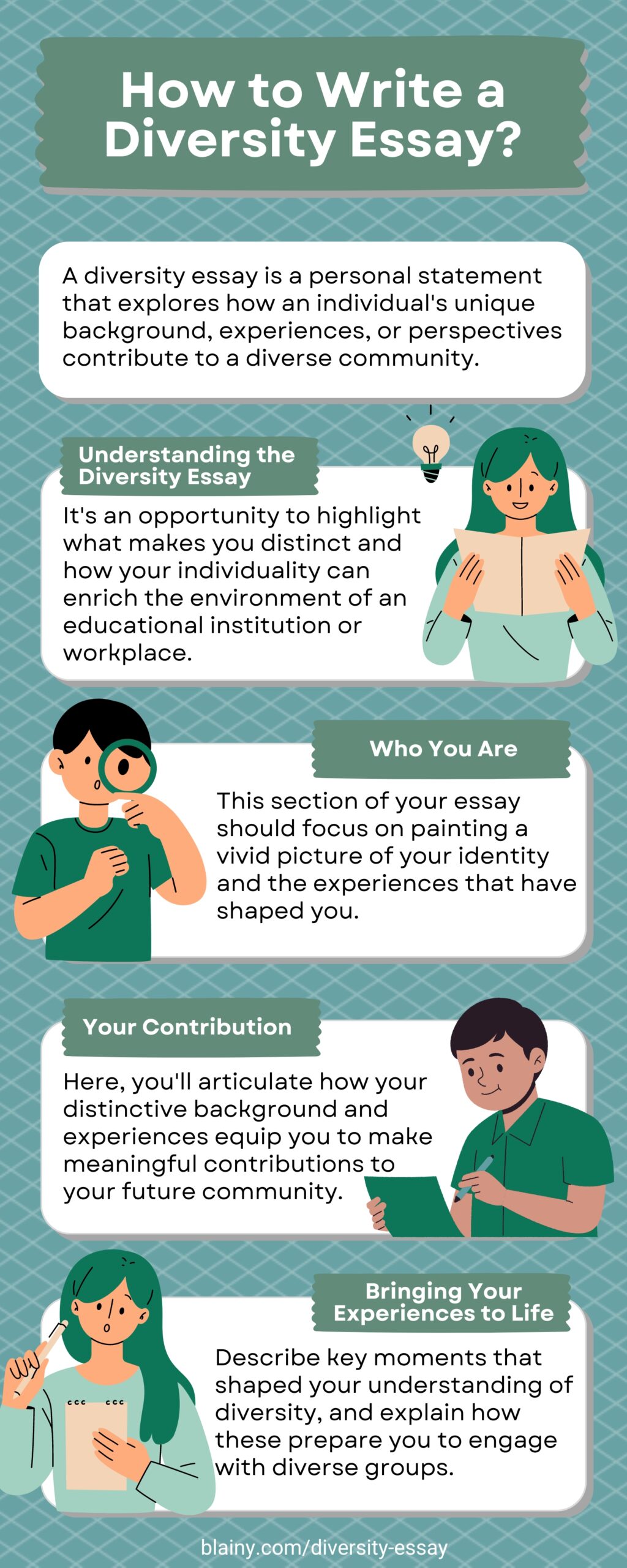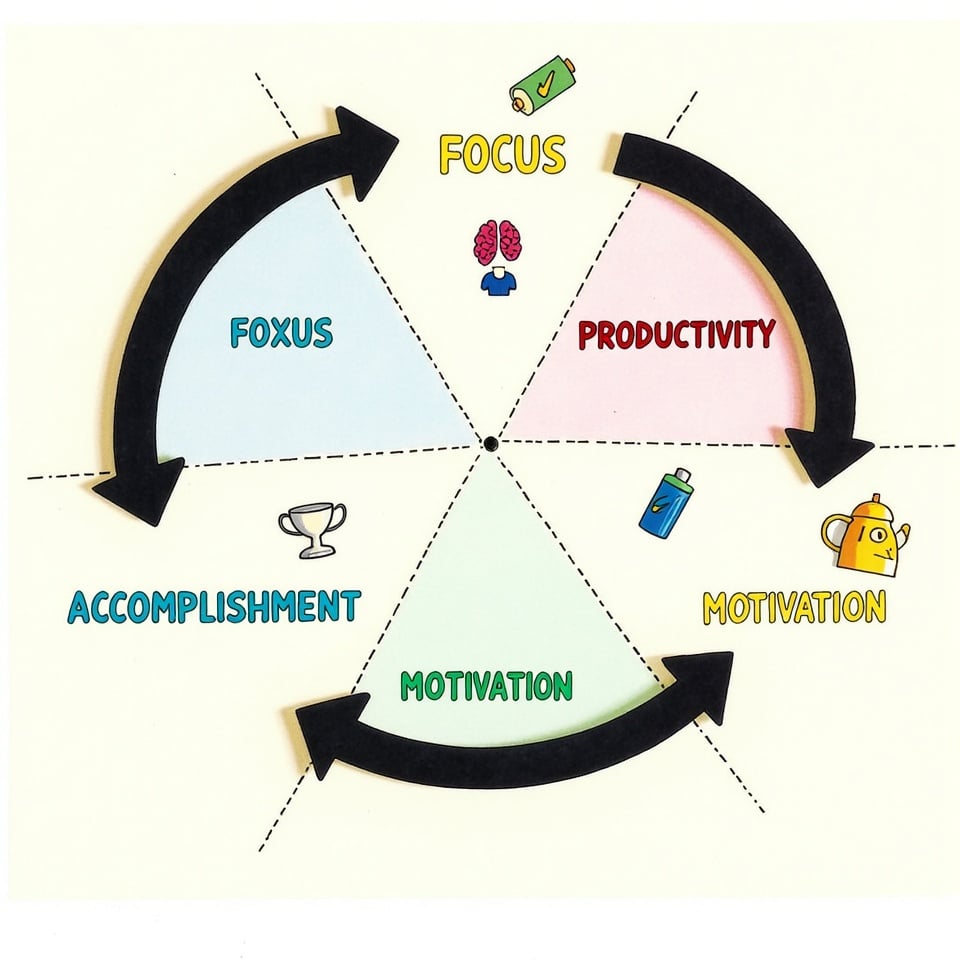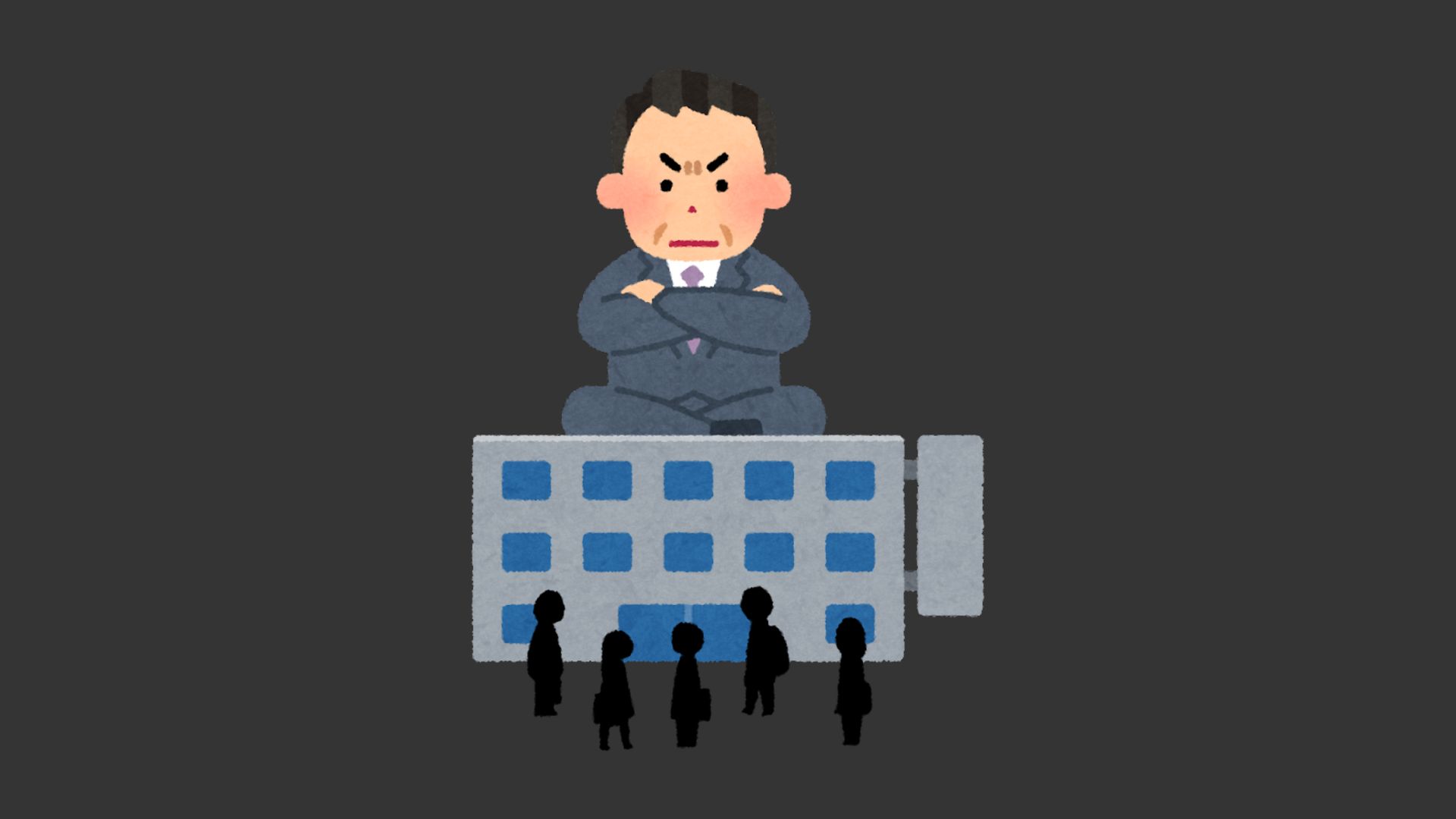A powerful diversity essay showcases your unique perspective, identity, or experiences that will enrich your future campus community. It reveals how your background has shaped your worldview and goals, demonstrating the value you’ll bring to college life through authentic stories of personal growth and insight.
Table of Contents
What is a diversity essay?
A diversity essay is a personal statement typically required as part of college or scholarship applications that asks students to reflect on their unique backgrounds, experiences, or perspectives related to diversity.
This type of essay allows applicants to share how their individual identity, culture, or circumstances have shaped their worldview and what they can contribute to a diverse campus community.
The purpose is to help admissions committees understand how an applicant’s distinct experiences or attributes would enhance the overall diversity and richness of the student body.
Why do schools want a diversity essay?
Schools require diversity essays for several important reasons:
- Fostering an inclusive environment: By seeking students with diverse backgrounds and experiences, schools aim to create a rich, multicultural learning environment that benefits all students.
- Promoting different perspectives: Diverse student bodies bring varied viewpoints to discussions, enhancing the educational experience and preparing students for a globalized world.
- Addressing historical inequalities: Many institutions use diversity essays as part of their efforts to increase representation from underrepresented groups in higher education.
- Assessing cultural competence: These essays help schools gauge an applicant’s ability to interact with people from different backgrounds, an increasingly valuable skill in today’s interconnected world.
- Enhancing the learning experience: Exposure to diverse ideas and cultures can broaden students’ horizons and challenge their preconceptions, leading to personal growth.
- Preparing students for diverse workplaces: By cultivating a diverse student body, schools better prepare their graduates for success in increasingly diverse professional environments.
- Fulfilling institutional missions: Many schools have diversity and inclusion as core values in their mission statements; these essays help them uphold those commitments.
- Identifying unique contributions: Diversity essays allow schools to recognize how each applicant’s unique background could contribute to the campus community in meaningful ways.
By requiring diversity essays, schools demonstrate their commitment to creating a varied and inclusive academic environment that reflects and prepares students for the diverse world beyond campus.
Sample diversity essay prompts
Diversity essay prompts can vary widely depending on the institution, but they generally aim to elicit responses that highlight an applicant’s unique background, experiences, or perspectives.
Here are some sample diversity essay prompts commonly used by schools:
- “Describe how your background or experiences will contribute to the diversity of our campus community.”
- “Tell us about a time when you encountered a perspective different from your own. How did this experience shape your worldview?”
- “How has your family history, culture, or environment influenced who you are?”
- “Discuss a significant challenge you’ve faced related to your background or identity. How did you overcome it, and what did you learn from the experience?”
- “What does diversity mean to you, and how have you demonstrated a commitment to fostering diversity in your school or community?”
- “Explain how your unique qualities or experiences will contribute to our diverse student body and enrich the learning environment for your peers.”
- “Describe an experience where you were in the minority. What did you learn from this situation?”
- “How has your background influenced your academic or career goals?”
- “Discuss a time when you challenged a belief or idea. What prompted you to act? Would you make the same decision again?”
- “How do you envision yourself contributing to and benefiting from the diversity of our campus community?”
These prompts are designed to encourage applicants to reflect deeply on their personal experiences and articulate how their unique perspectives can contribute to a diverse and inclusive campus environment. They allow students to showcase aspects of their identity or background that may not be apparent in other parts of their application.
How to write a diversity essay
To craft an effective diversity essay, start by reflecting on your unique experiences, identity, and background. Consider how these elements have shaped your perspective and what distinctive contributions you can offer to your prospective college community.

Write about who you are, and what you can contribute to the community
When crafting your diversity essay, begin by painting a vivid picture of your identity.
Delve into the core aspects of who you are – your cultural background, family dynamics, personal beliefs, and unique experiences that have shaped your worldview.
For instance, if you’re a first-generation college student from a working-class background, discuss how this has instilled in you a strong work ethic and resilience.
If you’ve grown up in a multicultural household, explain how this has enhanced your ability to navigate diverse perspectives and bridge cultural gaps.
Next, consider what you can contribute to the campus community based on these aspects of your identity.
Perhaps your experience as a minority in your high school has given you insights into creating inclusive environments, which you could apply to student organizations.
Or maybe your passion for your cultural heritage could lead you to organize events that educate and engage the broader student body.
Be specific about how your unique background equips you with skills, perspectives, or experiences that would enrich the campus community.
How will you contribute based on your background and experience
In this section, draw clear connections between your background and the concrete ways you plan to contribute to the campus community.
If you’ve overcome significant challenges, such as learning English as a second language, explain how this experience has made you an empathetic listener and effective communicator – skills you could use as a peer tutor or mentor for international students.
If you’ve been involved in community service or activism related to your background, discuss how you plan to continue and expand these efforts on campus.
For example, if you’ve worked to promote mental health awareness in your community due to personal experiences, describe how you might start a support group or awareness campaign at the university.
Write about your personal experiences
This section is where you can really bring your essay to life with specific, personal anecdotes that illustrate your points.
Choose experiences that have been particularly formative or revealing about your identity and values.
For instance, you might describe a family tradition that has deeply influenced your sense of community and how you plan to create similar bonds among your college peers.
You could share a story about a time when you faced discrimination or misunderstanding due to your background, and how you handled the situation.
Focus not just on the challenge itself, but on what you learned from the experience and how it has prepared you to navigate diverse environments in college and beyond.
Alternatively, you might discuss a project or initiative you led that was inspired by your background.
Perhaps you started a club celebrating your cultural heritage or organized a fundraiser for a cause close to your heart.
Explain what motivated you, the challenges you faced, and the impact of your efforts – both on your community and on your personal growth.
Diversity essay examples
Diversity essay examples can be valuable resources for understanding how to effectively communicate your unique background and perspectives.
Here are a few hypothetical examples that illustrate different approaches to writing a diversity essay:
Example 1: Cultural Heritage
As a Vietnamese-American, I’ve always felt like a bridge between two worlds. Growing up, I was often the unofficial family interpreter, translating parent-teacher conferences and doctor’s appointments. This responsibility taught me the nuances of cross-cultural communication from a young age.
I remember the day I realized the uniqueness of my position. It was during a school potluck when I brought my mother’s phở. As I explained the dish to my curious classmates, I saw their eyes light up with interest. That moment sparked my passion for cultural exchange.
Balancing traditional Vietnamese values with American social norms hasn’t always been easy. When I wanted to join the school drama club, my parents were hesitant, viewing it as a distraction from academics. Through patient dialogue, I helped them understand the value of extracurricular activities in American education. This experience honed my skills in negotiation and perspective-taking.
These experiences have shaped me into a cultural mediator. In college, I plan to establish a multicultural student association, creating a platform for students to share their heritage and learn from others. I believe my background equips me to foster an inclusive environment where diverse perspectives are valued and understood.
Example 2: Socioeconomic Background
Growing up in a low-income, single-parent household, I learned the value of resourcefulness and perseverance early on. When my mom lost her job during my sophomore year, I started working part-time at a local diner to help with bills. Balancing work, school, and family responsibilities was challenging, but it taught me invaluable lessons in time management and prioritization.
I’ll never forget the night I sat at our kitchen table, surrounded by scholarship applications, determined to find a way to afford college. It was in that moment that I truly understood the transformative power of education. This realization fueled my dedication to academic excellence despite the obstacles.
My background has given me a unique perspective on economic disparities and the importance of equal educational opportunities. In high school, I initiated a peer tutoring program for students who couldn’t afford private tutors. Seeing my classmates improve their grades and confidence was incredibly rewarding.
At college, I aim to continue advocating for socioeconomic diversity. I plan to work with the financial aid office to develop workshops on scholarship applications and financial literacy for first-generation and low-income students. My experiences have shown me that diversity of thought and background enriches the learning environment for everyone, and I’m committed to fostering that diversity on campus.
Example 3: Overcoming Physical Challenges
At age 12, I was diagnosed with juvenile rheumatoid arthritis. The chronic pain and limited mobility initially felt like insurmountable obstacles. However, this challenge became a catalyst for personal growth and resilience.
Adapting to my condition, I discovered a passion for adaptive sports. I joined a wheelchair basketball team, which not only improved my physical strength but also connected me with a supportive community of athletes facing similar challenges. Through this experience, I learned the power of perseverance and the importance of accessibility in sports and education.
In high school, I became an advocate for students with disabilities. I worked with the administration to improve campus accessibility and organized awareness events to educate peers about invisible disabilities. These efforts culminated in the creation of a student-led support group for those with chronic illnesses and disabilities.
At college, I plan to continue my advocacy work while pursuing a degree in Occupational Therapy. My goal is to develop innovative solutions for individuals with physical challenges, drawing from my personal experiences and the resilience I’ve developed. I believe my perspective will contribute to a more inclusive and empathetic campus community, fostering understanding and support for students of all abilities.
Example 4: Neurodiversity
As a student on the autism spectrum, I’ve always experienced the world a bit differently. My ability to hyperfocus has led me to dive deep into my passions, particularly in mathematics and computer science. I still remember the exhilaration I felt when I first solved a complex coding problem, working on it for hours without noticing the time pass.
However, social interactions often present challenges. Group projects were particularly daunting, as I struggled to read social cues and communicate my ideas effectively. Rather than give up, I decided to face this challenge head-on. I joined a public speaking club, where I learned strategies to better express myself and connect with others.
My experiences have made me an advocate for neurodiversity awareness. In high school, I started a peer support group for students with autism and ADHD. We shared coping strategies and celebrated our unique strengths. Seeing my peers gain confidence and self-acceptance was incredibly rewarding.
At college, I hope to continue promoting understanding and acceptance of neurodiversity. I plan to work with the disability services office to develop workshops on neurodiversity for faculty and students. I believe my perspective can contribute to creating a more inclusive academic environment that recognizes and values diverse ways of thinking and learning.
My journey has taught me that neurodiversity is a form of human variation that brings valuable perspectives and skills to any community. I’m excited to share these insights and continue advocating for acceptance and understanding in the college setting.
Final thoughts
Diversity essays offer applicants a unique opportunity to showcase their personal experiences and perspectives.
By authentically sharing their stories of cultural heritage, socioeconomic background, gender identity, or neurodiversity, students demonstrate how their unique backgrounds will enrich the campus community.
These essays highlight personal growth, resilience, and a commitment to fostering inclusivity.
As colleges prioritize diverse student bodies, well-crafted diversity essays become powerful tools for applicants to articulate their potential contributions to campus life and learning, ultimately promoting a more inclusive educational environment.
Frequently asked questions
What is diversity in an essay?
Diversity in an essay refers to the unique aspects of an individual’s background, experiences, and identity that contribute to a varied and inclusive community. In the context of college applications, a diversity essay allows applicants to highlight their distinctive perspectives, cultural heritage, socioeconomic background, gender identity, neurodiversity, or other characteristics that set them apart and add value to the campus environment.
What is diversity short paragraph?
Diversity encompasses a wide range of human differences, including but not limited to race, ethnicity, gender, sexual orientation, socio-economic status, age, physical abilities, religious beliefs, political beliefs, and other ideologies. It recognizes and celebrates the unique attributes that make individuals different from one another, fostering an environment of inclusion, respect, and equal opportunity for all.
What is the importance of diversity?
The importance of diversity lies in its ability to:
- Enhance creativity and innovation through varied perspectives
- Improve problem-solving by considering multiple viewpoints
- Foster cultural competence and global understanding
- Promote equity and social justice
- Prepare individuals for success in a diverse, global workforce
- Enrich educational experiences by exposing students to different ideas and backgrounds
- Challenge stereotypes and reduce prejudice
- Strengthen communities by promoting inclusivity and respect
- Drive economic growth by tapping into diverse talent pools
- Encourage personal growth and empathy through exposure to different life experiences







